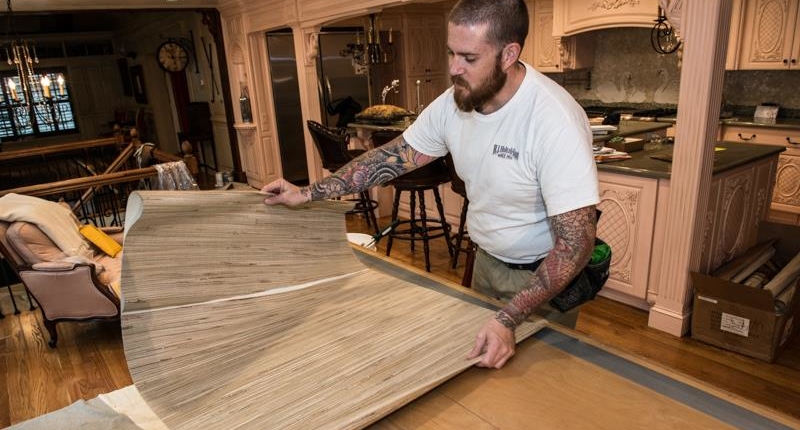The old adage about how a little effort at the start of a project can prevent problems down the line holds true, when it comes to painting and wallpapering your home.
H.J. Holtz & Son Production Manager Kelly Kutchey says the preparation process that goes into every job is designed to create a seamless execution and a happy outcome for everyone –especially the client.
“We know that when we take good care from the very beginning, we’re less likely to have to fix problems at the end,” Kutchey says. “Our team is trained well, so they know what to look for and how to manage whatever they find.”
Attention to detail is crucial in painting and wallpapering, Kutchey notes. At the beginning of interior projects, the manager in charge first determines which furniture has to be moved – to the center of a room for wall work, or out of the room if the ceiling is the project. “If we have enough room, we’ll move everything to the center and then drape with clear plastic, so we can see what’s underneath,” Kutchey says. “[Clear plastic draping] helps us know what we can and can’t lean on, and everything is protected.”
The next step in the preparation process is a thorough visual inspection. “We’re looking for stress cracks, holes, dents, scratches, anything that needs to be fixed,” Kutchey says. Drywall compound is used on walls, while wood filler resolves nicks and dings in trim. A smooth surface is essential for the finished look. “A fresh coat of paint will amplify any issue that’s going on, especially in trim work, because of the gloss paint typically used on trim,” Kutchey says.
Homeowners might think wallpaper in particular will cover surface issues, but the reverse is true. “Some papers are more forgiving, but most wallpapers are thin and will show bumps or indents in the surface,” Kutchey says.
When it comes to readying walls for hanging paper, the preparation process is the same as for painting, but additional preparation is needed “We always use wallpaper sizing – a clear primer – to create a slightly slick surface,” Kutchey says. “That way, the paper can be moved around a little as it’s applied and it’s easier to take it down later.
Latex glue is now used to attach paper to walls, which is far easier to dissolve than the resin-based paste of days gone by. For some projects involving hand-painted and high-end papers, the Holtz team may apply a layer of liner paper underneath the top layer, to protect the finished product.
When it comes to exterior painting, sanding and scraping thoroughly at the start of a project is a must. “The new paint won’t adhere properly if the foundation is loose,” Kutchey says.
Preparation work might add a little time to the full project, but it’s worth it in the end, Kutchey says. “Painting and wallpapering your home is an investment, and you want it done properly,” he says. “We have an experienced team, and we want to make sure we get it right from the start.”

